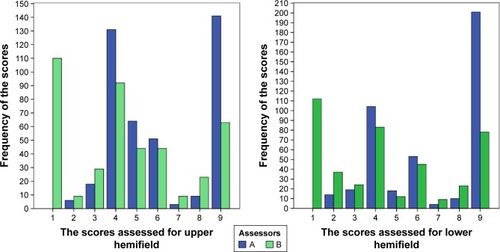Figures & data
Figure 1 The variability in the scores of the type of visual field between assessor A and B for upper and lower hemifield.

Table 1 Frequency of blindness according to the WHO criterion (N=423 visual fields)
Table 2 Frequency of blindness according to the 5-point ordinal scale, dichotomized (N=423 visual fields)
Table 3 Frequency of blindness according to the WHO criterion and 5-point ordinal scale, when visual field type was rated similarly (N=224 visual fields)
Table 4 Assessment of type of visual field (defect) with the 5-point ordinal scale
